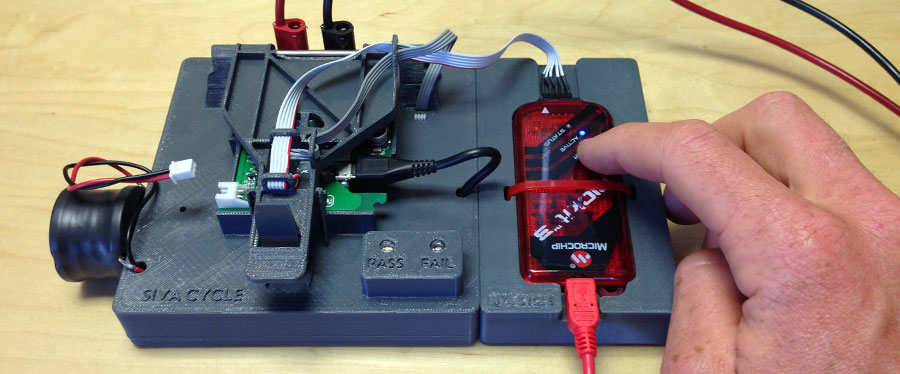Webinar: 3D Printing Jigs & Fixtures


In this conversational webinar recorded on March 19 at 9:00 AM PST, Fathom interviews Mechanical Engineer and Siva Cycle Co-Founder Aaron Latzke on his latest white paper Increase Speed to Market and Lower Cost by 3D Printing Fixtures available for download. Join the discussion for a deeper look at Latzkes experience with designing, 3D printing and implementing a quality assurance (QA) fixture for the production process of Atom, a bicycle generator and rechargeable battery pack designed to charge electronics or mobile devices via USB.
““3D printing drives valuable savings when making fixtures, an integral part of the production process.” ”
He concludes that 3D printing and additive manufacturing offer faster, lower-cost options for establishing production lines versus traditional methods — more iterations in less time with lower costs resulting in a more efficient overall design process.
About the Speaker: Aaron is CTO and Co-founder of Siva Cycle. He is an inventor, engineer and artist who wants to make a difference in peoples everyday lives. Aaron left the world of silicon chips to start Siva Cycle and become an expert in product design, rapid prototyping and making beautiful, functional power solutions. Aarons happiest when he is merging art and science with his hands, whether that be revolutionary power technology or next-level surf boards.
OVERVIEW OF 3D PRINTING JIGS & FIXTURES

Using additive manufacturing for the fabrication of jigs and fixtures provides many benefits compared to traditional fabrication methods and materials. Printed jigs and fixtures can reduce part count and weight and give designers freedom and flexibility to quickly design and produce a geometry that is customized to their application without being limited by subtractive manufacturing methods or having to adapt standard off-the-shelf systems and components to a specific application.
Additive manufacturing also gives designers the ability to quickly build replacements of broken components or iterate to improve the performance of the design in production. The reduction of inventory and continuous improvement of designs makes using additive manufacturing for jigs and fixtures a perfect fit for lean manufacturing environments.
Application Examples:
- Cutting Tool Jigs // Jigs can be designed in a 3D CAD program to be a work holder complementary to the geometry of your part. With the flexibility of additive manufacturing, a jig design can position and guide a cutting tool in simple 2D or complex and organic 3D geometries. A jig can also be designed to integrate hardened steel bushings to guide the cutting tool and prolong the life of the jig.
- Cutting and Trimming Guides // Additive manufacturing can be leveraged to create manual cutting and trimming guides that hold a part and guide a cutting tool for a trimming operation. This is especially useful for manual trimming operations on thermoformed parts.
- Inspection (CMM) // Printed fixtures can be used to stage parts and assemblies for automated CMM inspection operations to ensure that physical parts meet production requirements.
- Inspection (TEST) // Printed fixtures can be used to accurately position printed circuit boards (PCB) for quality control operations.
- End of Arm (ROBOTIC) // Attachments to robotic arms can be printed in geometries customized to your application.
- Assembly // Alignment fixtures can be designed and printed to position multiple parts for assembly with mechanical fasteners, weldments, adhesives or other joining methods.
- Assembly Line Transportation // Fixtures can be designed and printed to group parts together for assembly line transportation or packaging operations.
- Decorating // Paint and decorative masks can be printed in complex organic shapes to restrict paint to only the desired regions of a part.
- 5S Workplace Organizational Methodology // Custom tool holders can be designed and printed for manufacturing cells in a production environment. Tool holders can even be printed in different colors to correspond to a given production station.
- Machining // One of the most common uses for fixtures is for machining operations. Fixtures can be 3D printed to match the geometry of your part and can be designed to have integrated clamping functionality. Designers can also take advantage of the flexibility of printed fixtures to design vacuum fixtures for some parts.
